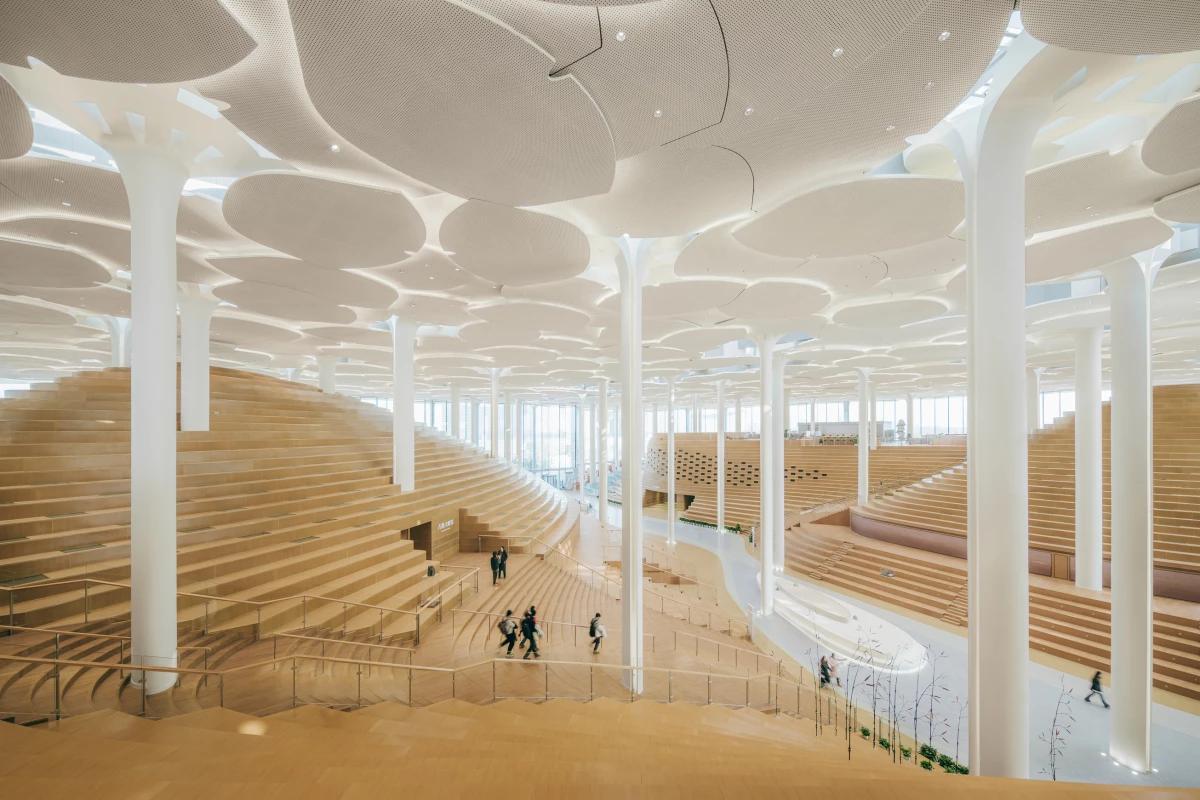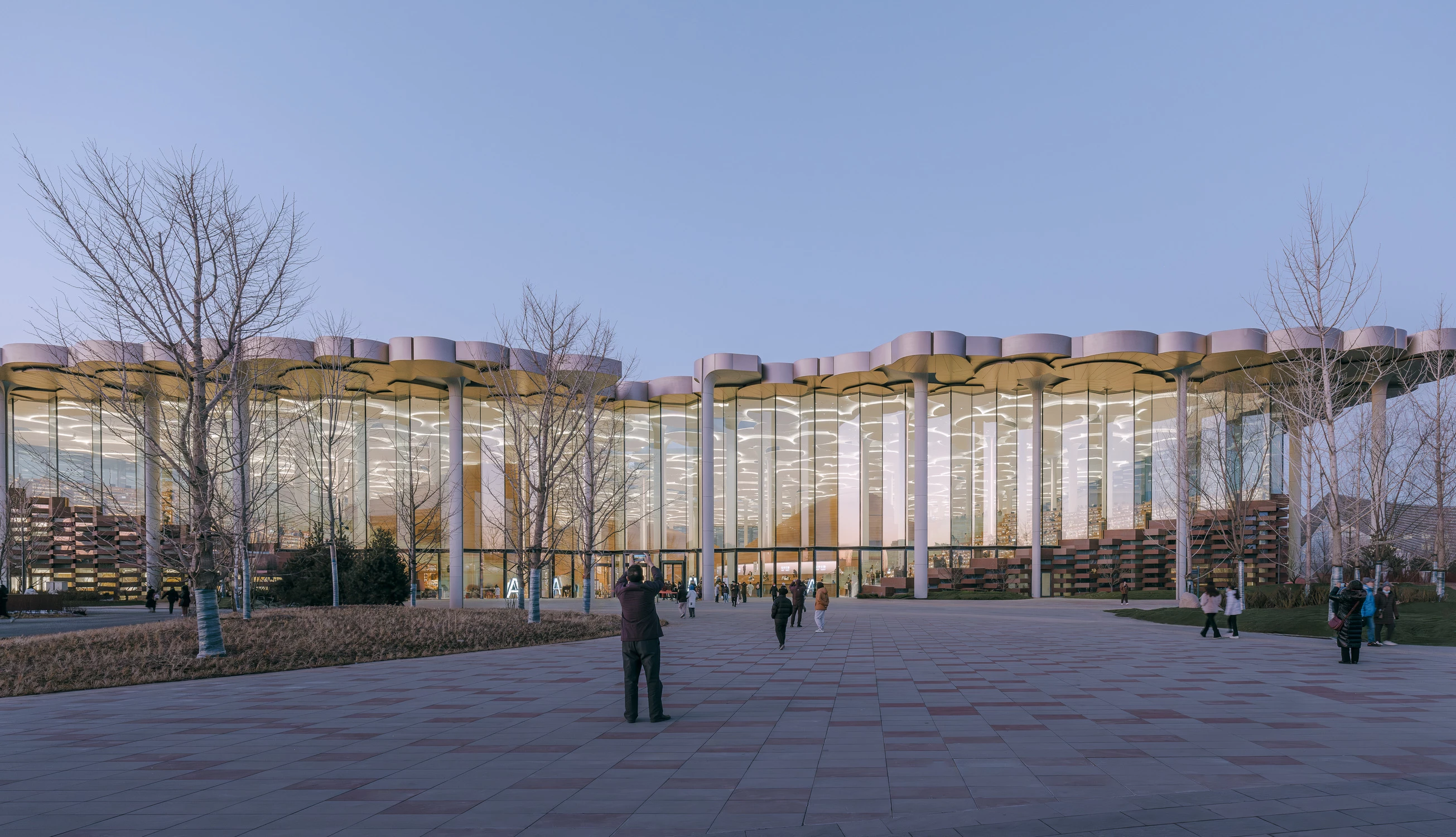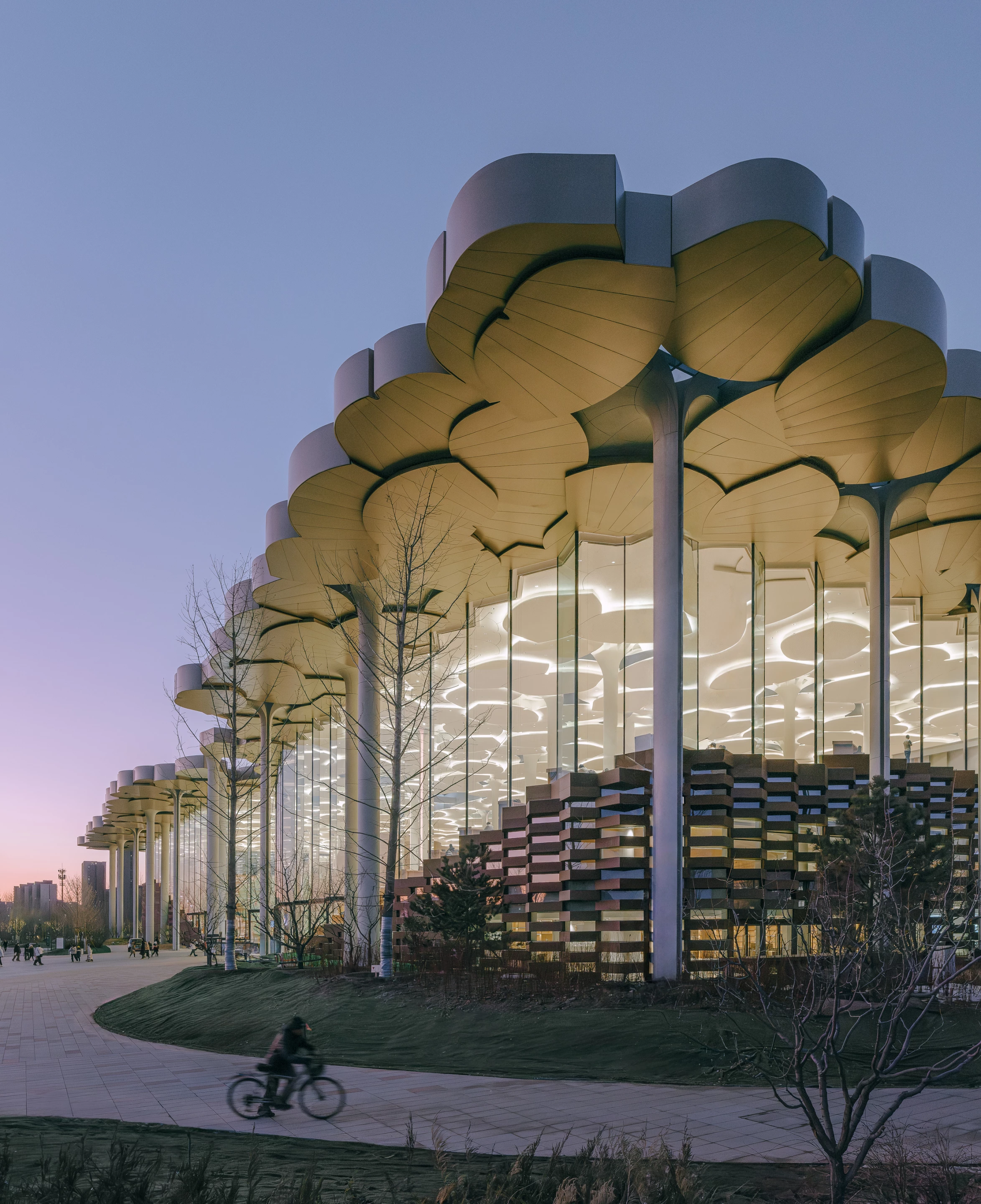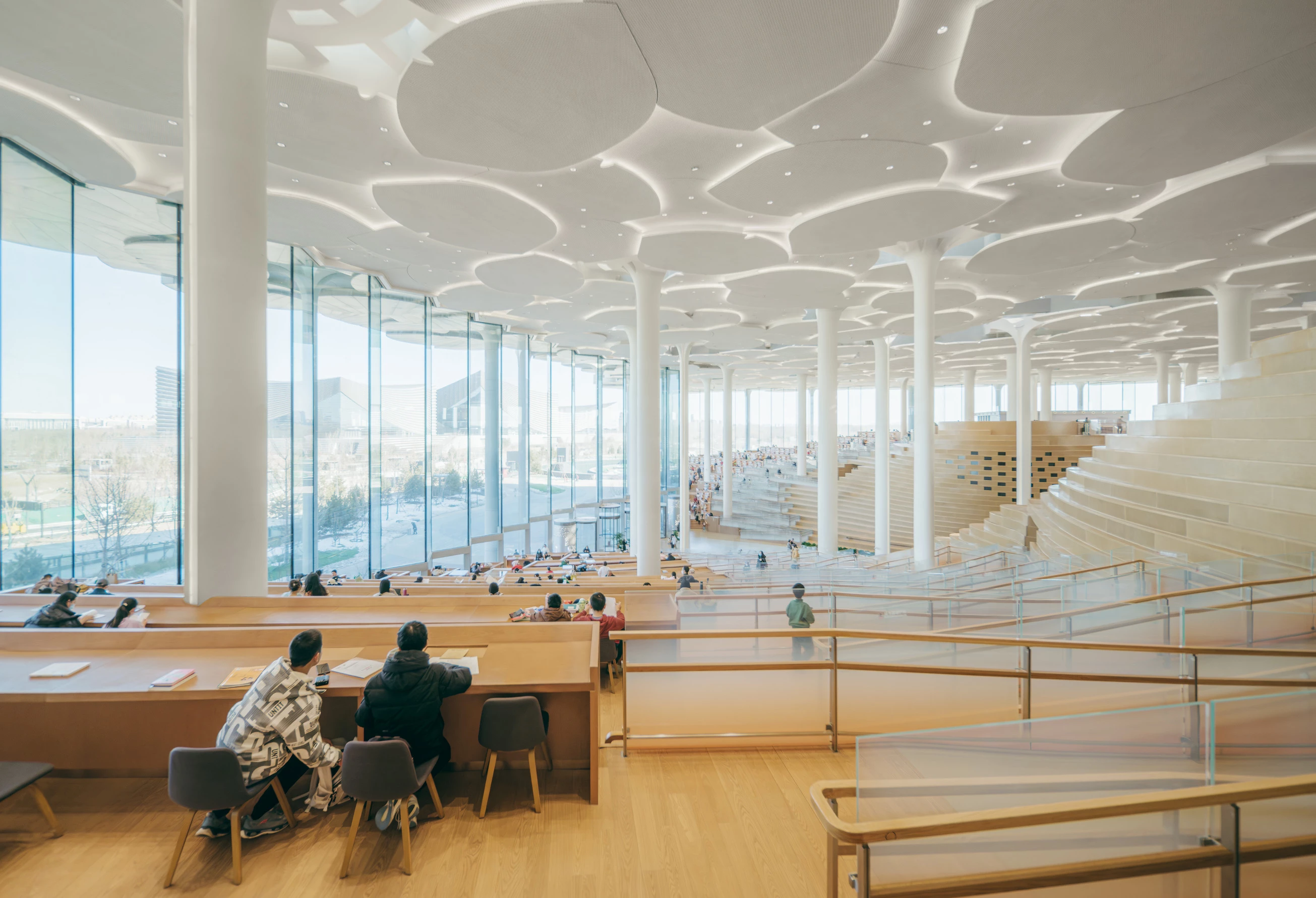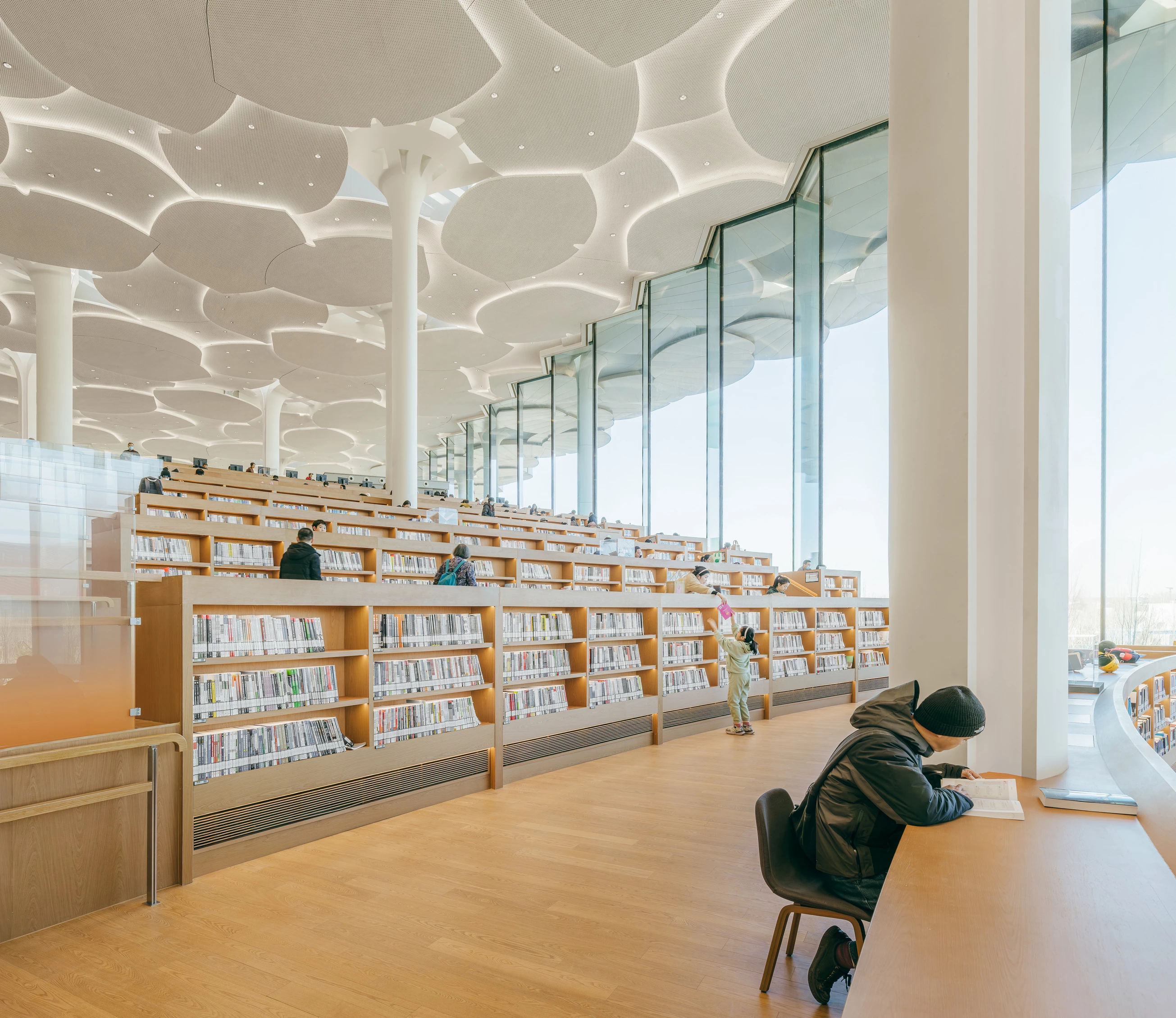Described as the world's largest climatized reading space by architect Snøhetta, the huge Beijing City Library forms an artificial forested landscape within China's capital. The building's interior is conceived as terraced hills and a valley, and is designed to make visitors feel like they're sitting under trees as they read.
The Beijing City Library is located in the burgeoning Tongzhou District and measures 75,000 sq m (over 800,000 sq ft). Structurally, it features a glazed exterior enclosing dozens of columns shaped to resemble ginkgo trees, and a forest canopy-like roof that features skylights. In a neat touch, its interior layout actually follows the course of a nearby river.
"Carved through the center is a meandering pathway called the Valley, which serves as the main circulation artery of the building," explained Snøhetta. "The Valley mirrors the course of the nearby Tonghui river, seamlessly continuing the experience of the landscape beyond and linking the north and south entrances to lead visitors to all other spaces inside.
"The terraced hills rising from the Valley are designed to create a sculpted interior landform that serves as the ground, seating, and shelving – an informal zone with opportunities to relax, talk, or read quietly, all while staying connected to the larger space. Semi-private reading areas and conference rooms are embedded into the hills, while book stacks and table seating are set on long, flat areas atop. This central open area is fully accessible and incorporates one of the largest book Automated Storage and Retrieval Systems (ASRS) in the world."

We can't really consider such a huge air-conditioned glass building "green," but the Beijing City Library does nonetheless boast significant sustainability features. Snøhetta used modular components and a simple structural grid to reduce manufacturing waste during the build process and its tree-like columns host integrated technology to control interior climate, lighting, and acoustics. They also collect rainwater from the roof to be reused for irrigation.
Additionally, large roof overhangs help mitigate solar gain on the glass facade, while the roof also incorporates integrated photovoltaic panels, reducing its draw on the grid.
We've seen a remarkable number of amazing libraries in China, including the Tianjin Binhai Library, by MVRDV, the Cloudscape of Haikou, by MAD, and the award-winning Pingtan Children Library, by Condition_Lab.
Source: Snøhetta
